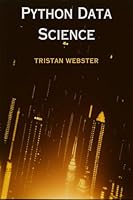
Mindset Mathematics: Visualizing and Investigating Big Ideas, Grade 5
- Length: 304 pages
- Edition: 1
- Language: English
- Publisher: Jossey-Bass
- Publication Date: 2018-04-03
- ISBN-10: 111935871X
- ISBN-13: 9781119358718
- Sales Rank: #37294 (See Top 100 Books)
Engage students in mathematics using growth mindset techniques
The most challenging parts of teaching mathematics are engaging students and helping them understand the connections between mathematics concepts. In this volume, you’ll find a collection of low floor, high ceiling tasks that will help you do just that, by looking at the big ideas at the fifth-grade level through visualization, play, and investigation.
During their work with tens of thousands of teachers, authors Jo Boaler, Jen Munson, and Cathy Williams heard the same message—that they want to incorporate more brain science into their math instruction, but they need guidance in the techniques that work best to get across the concepts they needed to teach. So the authors designed Mindset Mathematics around the principle of active student engagement, with tasks that reflect the latest brain science on learning. Open, creative, and visual mathematics tasks have been shown to improve student test scores, and more importantly change their relationship with mathematics and start believing in their own potential. The tasks in Mindset Mathematics reflect the lessons from brain science that:
- There is no such thing as a math person – anyone can learn mathematics to high levels.
- Mistakes, struggle and challenge are the most important times for brain growth.
- Speed is unimportant in mathematics.
- Mathematics is a visual and beautiful subject, and our brains want to think visually about mathematics.
With engaging questions, open-ended tasks, and four-color visuals that will help kids get excited about mathematics, Mindset Mathematics is organized around nine big ideas which emphasize the connections within the Common Core State Standards (CCSS) and can be used with any current curriculum.
Table of Contents
Introduction
Activities for Building Norms
Big Idea 1: Thinking in Cubes
Big Idea 2: Estimating with Fractions
Big Idea 3: Using Fraction Equivalence
Big Idea 4: Exploring the Coordinate Plane
Big Idea 5: Seeing and Connecting Patterns across Representations
Big Idea 6: Understanding Fraction Multiplication Visually: Tiling with Wholes and Pieces
Big Idea 7: What Does It Mean to Divide Fractions?
Big Idea 8: Thinking in Powers of 10
Big Idea 9: Using Numbers andSymbols Flexibly







